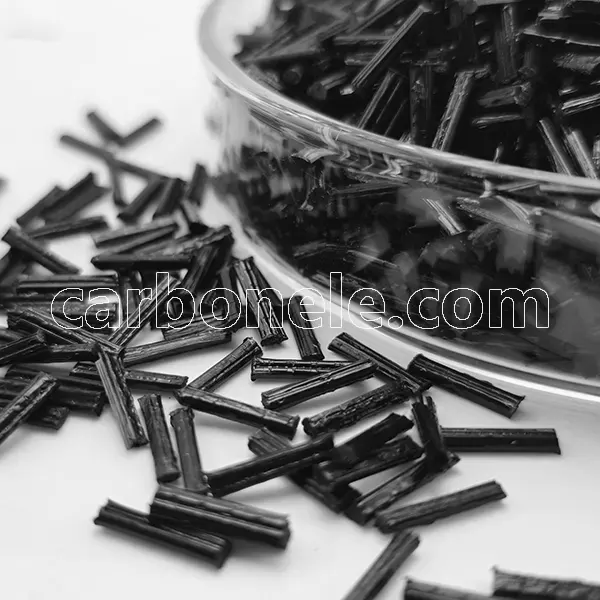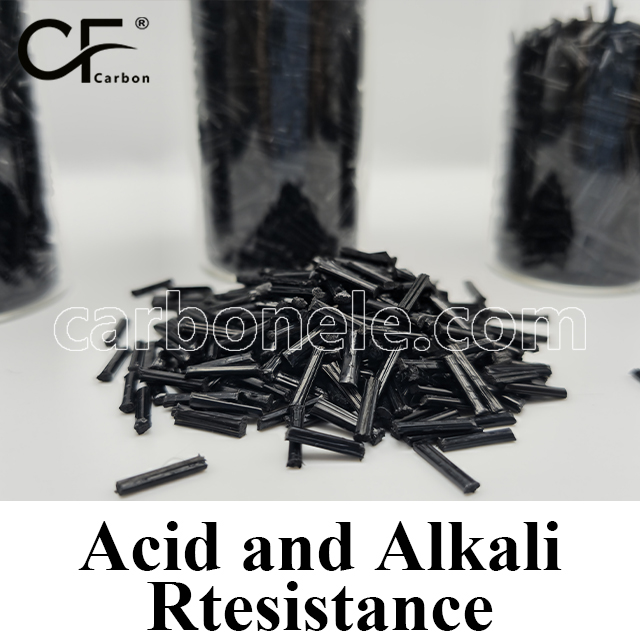
Raw Extrusion Molding CFR PA6 Pellets for 3D Printer
Raw CFR PA6 Pellets for 3D printing have good mech. props., thermal & dimensional stability, processability, are lightweight, and have chemical resistance.
- Manufacturer: Carbon New Material
- OEM/ODM: Acceptable
- Color: Black
- Free samples: ≤10kg
- MOQ: 100kg
- Port: Xiamen
- Model: PA6-LCF-BCA3
- Fillers: Carbon fibers
Extrusion Molding CFR PA6 Pellets for 3D Printer
Why Choose CFR PA6 Pellets as raw materials for 3D printing?
Excellent Mechanical Properties
PA6 itself has good mechanical properties. With the addition of carbon fiber, the strength and stiffness are further enhanced, which can meet the mechanical requirements of printed parts and be used to manufacture functional parts with high strength.
Strong Thermal Stability
Carbon fiber improves the thermal stability of PA6. It can maintain stable performance at high temperatures, without being affected by the high temperatures during the printing process and in actual use.
Good Dimensional Stability
Compared with pure PA6, the shrinkage rate during printing is lower, which can effectively reduce the warping deformation of printed parts, ensuring the printing accuracy and dimensional stability to meet the requirements of high precision applications.
Good Processability
It has good fluidity and extrudability, and can be smoothly extruded and deposited through the nozzle of the 3D printer, enabling the printing of complex shapes and providing greater freedom for product design.
Lightweight Advantage
Carbon fiber has a high specific strength and specific modulus. While improving the material properties, it can also effectively reduce the weight of parts, which is of great significance for the lightweight design in fields such as aerospace and automotive, helping to improve energy efficiency and transportation efficiency.
Good Chemical Resistance
PA6 has a certain degree of chemical resistance. After adding carbon fiber, its chemical resistance is further improved, allowing the printed parts to be used stably in harsh chemical environments for a long time.
| Application Fields | Product Examples | Main Properties |
|---|---|---|
| Aerospace | Aircraft interiors, small wing components, aerospace part fixtures, etc. | High strength, stiffness, thermal stability. Lightweight, accurate dimensions, corrosion-resistant. |
| Automotive Manufacturing | Custom parts around the engine, dashboard brackets, small functional parts inside the car, etc. | Adequate strength, stiffness. Thermal stability, dimensional accuracy. Good processability, wear & corrosion-resistant. |
| Electronics and Electrical Appliances | Electronic product casings, custom circuit board brackets, special electronic component fixtures, etc. | Mechanical protection. Dimensional stability, thermal stability. Electrical insulation, corrosion-resistant. |
| Medical Devices | Customized medical equipment casings, surgical instrument accessories, rehabilitation device fittings, etc. | Required strength, stiffness. Non-toxic, biocompatible. Thermal stability, dimensional accuracy, corrosion-resistant. |
| Industrial Design | Product prototypes, creative design models, functional test samples, etc. | Good processability, dimensional stability. Mechanical simulation, thermal stability, corrosion-resistant. |
| Architectural Design | Architectural models, small samples of building components, landscape feature models, etc. | Complex shapes printable. Dimensional stability, strength for display. Thermal stability, corrosion-resistant. |
You can first obtain information about the product such as specifications, performance, and price, and then select the appropriate product according to your own needs. Meanwhile, you can ask the manufacturer to provide samples for testing to ensure that the material meets your usage requirements.
If you are interested in purchasing this composite material, please directly contact the manufacturer, Carbon (Xiamen) New Material.
In addition, if you want to learn more about carbon fiber reinforced thermoplastic composite materials (CFRTPs), please click here.
How to Buy?
If you want to obtain information such as product specifications, performance, and price, choose a suitable product according to your own needs. Meanwhile, you can ask the manufacturer to provide samples for testing to ensure that the material meets your usage requirements. If you are interested in purchasing this composite material, please contact the manufacturer Carbon (Xiamen) New Material directly.

Frequently Asked Questions
Carbon (Xiamen) New Material Co., Ltd. aims to provide buyers with "one-stop" worry-free high-quality services. Here you can find all information about carbon fiber engineering plastics. If you still have questions, please send us an email for consultation!
-
How can I contact the manufacturer of a product that interests me?
When you find a product you are interested in, you can contact the manufacturer directly by sending an email and we will get back to you as soon as possible.
-
How do I find the products that interest me?
All you need to do is enter the keyword, product name in the search window and press the Enter key on your keyboard. Your search results page will then be displayed. You can also search within the product category pages on the home page. Each category is divided into subcategories, allowing you to refine your search and find products that interest you.
-
Where will I find a buying guide?
Please contact our after-sales service directly and we will provide you with a comprehensive operating guide.
-
What are CF Reinforced Thermoplastic Composites?
CF Reinforced Thermoplastic Composites are materials where carbon fibers are incorporated into a thermoplastic matrix. They combine the strength and stiffness of carbon fibers with the processability and recyclability of thermoplastics. For instance, they are used in automotive parts like bumper beams.
-
What are the benefits of CF Reinforced Thermoplastic Composites over traditional composites?
The key benefits include faster production cycles, easier recyclability, and better impact resistance. They also offer design flexibility. An example is in the manufacturing of consumer electronics casings where complex shapes can be achieved more easily.
-
How are CF Reinforced Thermoplastic Composites processed?
Common processing methods include injection molding, extrusion, and compression molding. Injection molding is widely used for mass production. For example, in the production of small components for the medical industry.
-
What industries use CF Reinforced Thermoplastic Composites?
They are utilized in aerospace, automotive, medical, and sports equipment industries. In aerospace, they can be found in interior components. In the medical field, they might be used in prosthetics.
-
How does the carbon fiber content affect the properties of the composites?
Higher carbon fiber content generally leads to increased strength and stiffness but may reduce ductility. A moderate content is often balanced for specific applications. For example, a higher content might be preferred in structural parts of a race car.
-
What are the challenges in using CF Reinforced Thermoplastic Composites?
Challenges include higher material costs, complex processing equipment requirements, and ensuring uniform fiber dispersion. Issues with adhesion between the fibers and the matrix can also arise. An example is in achieving consistent quality in large-scale production.























